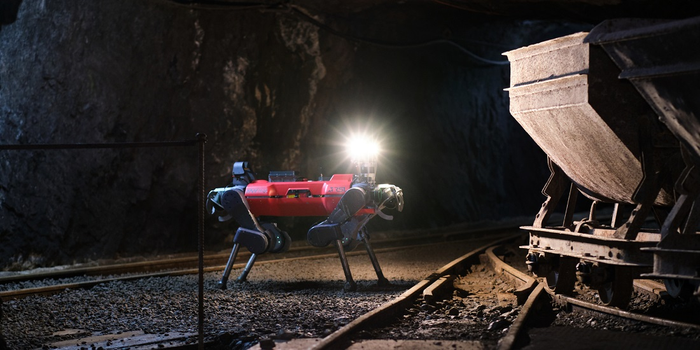Team Cerberus has won the DARPA Subterranean Robot Challenge. This event calls on teams to develop innovative robots that can explore diverse subterranean environments. The prize for the winning team is $2 000 000. The group is headed by an NTNU professor.
“This award still feels absolutely incredible for us,” says Kostas Alexis, a professor at the Norwegian University of Science and Technology’s (NTNU) Department of Engineering Cybernetics. “We wanted to do well, but it ‘s hard to believe that we actually won.”
Professor Alexis received support from the US Defense Advanced Research Projects Agency (DARPA) to work on the project while he was still affiliated with the University of Nevada, Reno.
International collaboration
Professor Alexis heads up Team Cerberus, but the victory is clearly the result of international collaboration. Team Cerberus participants come from highly reputable research institutions in different countries.
The team also includes Professor Eelke Folmer from the University of Nevada, Reno; Professors Marco Hutter and Roland Siegwart from ETH Zurich; Professor Mark Mueller from the University of California, Berkeley; Professor Maurice Fallon from the University of Oxford; Adrien Briod from Flyability and several leaders from the Sierra Nevada Corporation.
The level of competition was very high, which becomes evident when you see who Team CERBERUS had to compete against. Other participants in the final round of the DARPA Subterranean Challenge were from NASA Jet Propulsion Laboratory and MIT, Carnegie Mellon University, CSIRO and the Georgia Institute of Technology, and the University of Colorado.
Subterranean environments
In the final round of competition, the robots had to investigate underground tunnels, locate objects and report on the site.
All of the competition took place in passages that mimicked man-made underground systems, as well as natural cave passages. The robots also had to deal with extra challenges such as rough terrain and smoke. Two videos give an idea of the challenges the robots encountered. The first is from the actual competition, while the second is a more general description of the robots
“This was the most labour-intensive project I’ve ever been involved in. We were constantly developing ideas and working across multiple research environments and geography,” says Kostas.
The project took a full three years to complete. During that time, Team Cerberus created a whole team of robots, both legged and aerial, that are capable of exploring varied underground environments. The team had to qualify for the final round which was held last week.
“The prize is naturally a big feather in the cap for NTNU’s Department of Engineering Cybernetics (ITK), the UAV lab at ITK and NTNU,” says Lars Struen Imsland, head of the department.
“The fact that the leader of the team that won is with us at NTNU gives us great visibility in the foremost arena within the field. It will help attract students, researchers, new projects and more. Going forward, the prize will provide new opportunities, for example in combination with underwater robotics, where we’re already very strong,” says Professor Imsland.
Image: Team Cerberus used several robots in the competition. The robot pictured was developed at ETH Zurich and was key to the team’s victory. Credit: Team Cerberus.
See also

